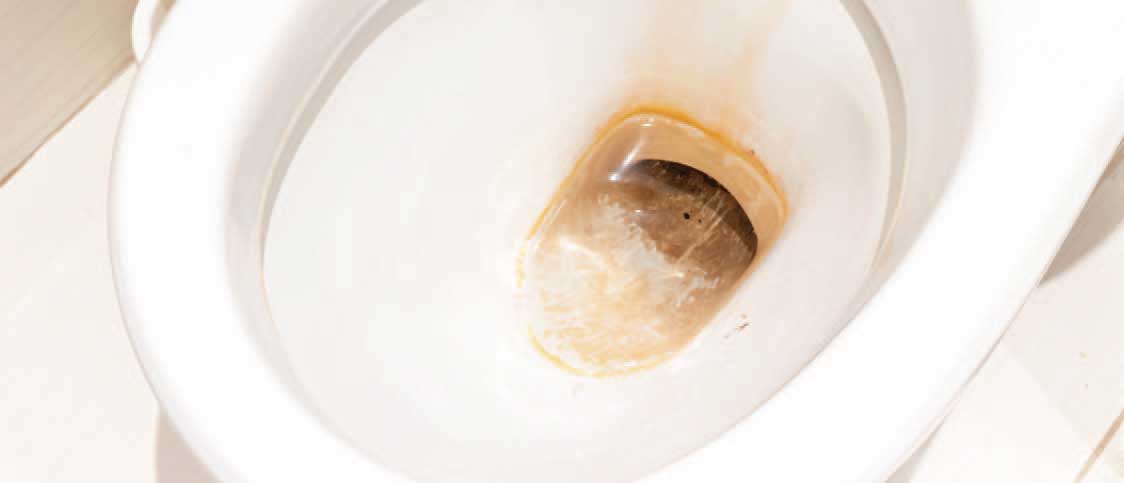As the world emerges from the COVID-19 pandemic, there are proactive efforts that can be taken to reduce the health and safety impacts resulting from the low- or no-occupancy of buildings. The plumbing industry and public health officials were faced with an unprecedented circumstance where building water systems designed to supply water to building occupants on a regular basis were suddenly either shut down or used very sporadically.
The resulting stagnant water conditions can provide a perfect environment for the growth of waterborne pathogens. Low or no-flow conditions in building water systems can present an opportunity for pathogens to spread throughout the premise plumbing system.
Of particular concern is Legionella, a waterborne pathogen that is harmful to occupants when inhaled.
What are the risks to the building’s occupants when the building is reopened? Are the risks from waterborne pathogens elevated when the building water system becomes partially or fully operational after a prolonged shutdown? How long is prolonged? Can the risks be minimized by taking certain steps to shut the building down, maintain it during shutdown, and reopen it?
To address the questions above, IAPMO partnered with the American Water Works Association (AWWA) to convene a committee of experts from across the nation to address this threat via the development of a manual that is intended to provide expert guidance on building water system safety: the Manual of Recommended Practices. This manual provides sound and effective risk management practices for preparing water systems when buildings must be shut down or put into low use modes, “exercising” building water systems during periods of no- or low-use, and evaluating and preparing water systems for reopening. The manual also provides practices for potable water systems, nonpotable water systems and mechanical systems. For the purposes of this article, we will be focusing on the requirements for potable water systems.
Potable Water System
The health and safety of the potable water systems in our buildings is predicated on the regular turnover of the water throughout the building. As water is used, new water that contains disinfectant from the water utility replaces the water that was used. The residence time of the water in the building depends on the flow rates and flush or fill volumes of the plumbing fixtures and appliances, and the number of times these fixtures and appliances are used each day. If the water sits too long, the disinfectant dissipates. Couple the loss of disinfectant with other conditions, such as stagnation, improper temperature control and the presence of bacteria feeding nutrients from elastomers and other organic components in the plumbing systems, and the health risks to building occupants can increase.
So, how can we best manage these risks? One of the key recommendations is to establish a Water Management Program (WMP) in accordance with ASHRAE 188-2018, Legionellosis: Risk Management for Building Water Systems. A well-developed WMP, once completed, then becomes the reference manual for the water systems in your building. Other recommended actions include regular communication with your water purveyor and regular testing for water quality, paying particular attention to disinfectant levels at key points in the potable water system. This testing, coupled with regular inspections of equipment, establishes a baseline; and deviations from the baseline, determined by ongoing testing, determine if other remedial actions are required.
The manual differentiates between complete and partial shutdown. It discusses the frequency of flushing and describes different flushing protocols with the idea of periodically turning over the water in the potable water system. And, when it is time to reopen, the manual provides guidance for bringing the building back to normal operations.
The New Normal
As buildings continue to reopen, many infection control and safety measures will be noticeable to building occupants, but as usual, the measures taken to maintain healthy plumbing and mechanical systems will go largely unheralded. Pumps, fans, and compressors transparently move water, air and refrigerant throughout all buildings. During normal operation, all three mediums contribute to the mode of transmission that can impact the health of the building occupants. Thus, the work of the building WMT may be unnoticed, but will nonetheless be critically important to help grow and maintain public confidence in the safety of our buildings.
As a society, this pandemic taught us that we need to be better prepared for the next time we need to respond to a similar threat on a global or regional scale. We have learned to be proactive, and the Manual of Recommended Practices will be an important tool to help prepare the building water systems for future shutdowns, provide measures to exercise water systems during an interruption to the normal building operations, and the steps required for the safe reopening of the building.
Last modified: December 29, 2022




